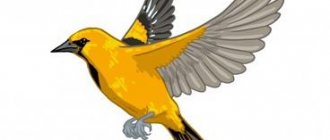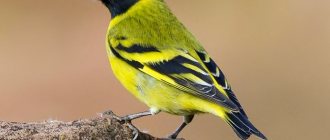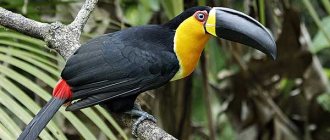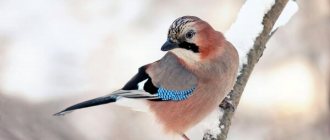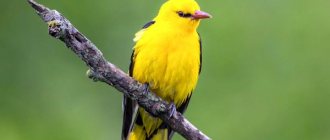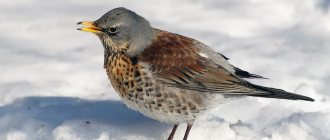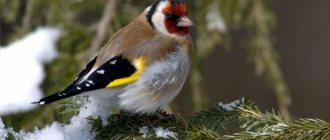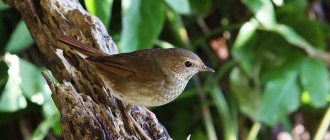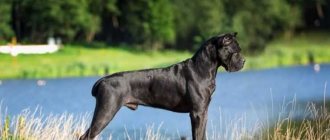08/31/2020 Scientist cat Animals
In most cases, birds living in the forests and steppes of Russia and the world have a protective coloration. Brown or greenish plumage allows these representatives of the fauna to become invisible among the branches of trees or grass. But sometimes in nature you can see brightly colored birds. Birds with red heads, for example, look very impressive. Such bright spots also usually serve as protection for birds. Appearing suddenly before the eyes of a predator, they confuse him. As a result, the potential victim can gain time and escape.
List of birds with red head feathers
In our country, unfortunately, there are not so many owners of such bright jewelry. Basically, red spots on the head can only be seen in birds such as:
- green woodpecker;
- black woodpecker;
- common tap dance.
There is also a bird with a completely red head that lives in Russia. It belongs to the group of waterfowl. This duck is called the red-headed duck.
Most often, brightly colored birds are found in nature in the tropics. For example, the red-capped pipra, which lives in South America, looks very impressive. Some representatives of such bright decorations are widespread in the tropics. Others number only a limited number of individuals. The last group of birds includes, for example, Bockermann's manakin, recently discovered by zoologists, living exclusively on the Ararip Highlands in Brazil. This bird has a snow-white body color and sports a scarlet helmet.
Population and species status
Mergansers are a rare species and, in some countries, endangered. Their population is not yet in danger, as their numbers are considered stable. However, in a number of countries, merganser ducks are listed in the Red Book, for example, in Belarus and Lithuania. This is due to the fact that on the territory of these states the number of birds is small and is constantly decreasing.
The situation is also related to the type of population itself. If the birds lead a sedentary lifestyle, they face fewer dangers, and the number of mergansers remains stable. Migratory ducks are exposed to more dangers while moving from one place to another. Also, the biggest risk factor is human activity that destroys nature and the usual habitats of ducks.
Green woodpecker: description and distribution area
In Russia, this representative of birds lives only in the European part. In the east, its distribution area is limited to the Volga Valley, in the north - to the Gulf of Finland. The largest populations of green woodpeckers are recorded in Germany, France and Spain. Most often this bird is found in deciduous forests, parks and gardens.
The main distinguishing features of these birds are the olive-green plumage of the body and wings, as well as a narrow bright red cap on the head. Under the beak of this species of woodpeckers there is a dark stripe resembling a mustache. The front part of the head of these birds is black and against the background of green cheeks and a red cap it looks like a spectacular mask.
These birds scream all year round. The voice of both females and males of the green woodpecker is sharp and quite shrill. Many people who have heard the singing of these birds compare it with laughter or squealing. This woodpecker rarely chisels trees. However, like ordinary representatives of the species, it almost never produces trills when searching for food in wood.
Crowned pigeons
Birds of extraordinary beauty, whose heads are crowned not just with crests, but with real crowns.
The genus of crowned pigeons includes 3 species, and all of them live only on the island of Papua New Guinea:
- crowned pigeon;
- chestnut-breasted crowned pigeon;
- fan crowned pigeon.
Interestingly, males and females look exactly the same. However, they differ from pigeons in the usual sense not only in their crest and unusual plumage color, but also in size. The height of crowned pigeons reaches 80 cm, and they weigh about 2.5 kg.
The local population exterminated these birds for tasty meat, which led to a sharp decline in the population. Today, crowned pigeons are a vulnerable species and are protected by the state.
Description of the black woodpecker
This red-headed bird is common throughout Russia. The black woodpecker is also found in many other countries of Europe and Asia. It is distinguished from other members of the family by the charcoal coloring of the feathers of the body and wings, as well as the bright red cap on its head. This feathered forest inhabitant is quite large in size.
Compared to other woodpeckers, this is one of the largest species. This large bird with a red head weighs about 500 g. The wingspan of the black woodpecker is 70-80 cm.
The beak of this representative of birds is very strong. If desired, a bird can easily break through even hard wood of pine, spruce or cedar. Therefore, the black woodpecker, unlike the green one, lives not only in broad-leaved forests, but also in coniferous forests.
One of the features of this interesting and beautiful bird is that it is practically not afraid of humans. On the contrary, some individuals often show great curiosity towards people who come to the forest. Such woodpeckers can spend hours watching mushroom pickers and hunters, following them and flying from branch to branch.
Despite the presence of a bright cap, it can be quite difficult to notice a black woodpecker among the foliage. This bird can be detected mainly only by the loud trills it produces when extracting worms from wood.
Character and lifestyle of a duck
Mergansers are migratory or partially migratory birds. They go to warm countries for the winter in October and early November, but return to their homes early, already in February. When flying away, ducks form huge flocks numbering hundreds of individuals, and return in small groups of no more than two dozen birds. In warm weather and mild winters with little snow, most mergansers do not fly south at all.
Those populations that live in the southern regions undergo so-called vertical migration, moving over short distances.
These large birds are distinguished by their calm nature, but given the opportunity, ducks can stand up for themselves, because with their long red beak they not only successfully catch large fish, but are also able to pierce the durable shell of crayfish.
Common tap dance
This mottled forest bird is also distinguished by the presence of a red spot on its head. True, the dimensions of the latter are not too large. The common tap dance lives in the tundra and forest zones of Russia, America and Europe. This representative of birds is sometimes found in Asia.
This small bird weighs only about 15 grams. It feeds on plant seeds - mainly alder, pine and birch. The upper body of the common tap dancer has a grayish-brown color with mottled spots. The underparts of these birds are white. Like the back, it is covered with large streaks. In females, only the cap itself is red. Males also sport a crimson breast. The common tap dancer also has several black feathers on its tail.
The voice of this small bird with a red head, resembling the size of a sparrow, is very clear. Moreover, her “pee-pew” and “even-even” can be heard almost continuously. These birds are not only noisy, but also very nimble. In this regard, they easily compete with their common neighbors - tits and siskins - jumping from branch to branch, and sometimes hanging upside down in order to reach food.
Habitat
In summer, the common waxwing inhabits the taiga zone of Russia, as well as the forest-tundra. It lives in both coniferous and mixed forests.
Nomadic birds fly to the Altai mountains for the winter.
More information about which birds fly away in autumn can be found here:
In early June they return from wintering to their nesting sites. During the nomadic period, waxwings reach the Crimea, the Caucasus and Central Asia.
Twice a year, in spring and autumn, “crested” birds can be found in central Russia, namely in the Moscow region and among the birds of the Moscow region .
They are not afraid to fly into parks in large cities. Like siskins , these are very trusting birds, which contributed to their partial extermination.
The waxwing bird, which inhabits the remote and sparsely populated northern part of the country, leads a secretive lifestyle.
This is what a common waxwing looks like
Amur or Japanese birds inhabit the Far East of Russia. The species is also found in the Khabarovsk Territory, Eastern Yakutia, and Sakhalin.
Some representatives go to Japan, Taiwan, and Korea for the winter.
The Amur waxwing is not much different from the common one
The cedar or American waxwing lives in the forest zone of Canada, as well as Central and North America.
Pictured is a cedar waxwing
Red-headed Pochard - what kind of bird?
This representative of the bird family lives mainly in the temperate latitudes of Central Russia and Siberia. This red-headed waterfowl is somewhat smaller in size than the mallard. An adult weighs approximately 700-1000 grams. The red-headed duck belongs to the group of migratory waterfowl. The wings and body of this duck are light gray, the tail and breast are black, and the head is red-brown.
This representative of birds feeds mainly on plant foods. The red-headed duck builds nests in both moderately moist and dry places. In Russia, this duck is considered a valuable game bird.
Red-capped pypra
These spectacular little birds in South America can be found mainly in the tropical forests of Costa Rica, Mexico, Panama and Colombia. The red-capped pypra feeds mostly on fruits. Sometimes this bird also eats plant seeds. An interesting feature of pipra is that any food is digested in its stomach in literally 15-20 minutes.
The color of this representative of tropical birds is black. Against the background of the body, tail and wings, their red head therefore looks very bright and impressive. In terms of their lifestyle, these birds are quite reminiscent of domestic tits. They live in small families and love to flutter between the branches of trees and bushes.
The voice of this forest bird with a red head is quite clear. Pipra “sings” often. The male of this bird, for example, periodically makes short sounds reminiscent of “psit,” thus marking a tree chosen as its own territory. Pipra females are also quite noisy.
What does it eat?
The diet of merganser ducks can be the envy of gourmets with delicate tastes. These birds prefer to feed on fairly large fish, up to 25 centimeters in length. Among river fish, ducks choose trout and small salmon, as well as grayling, pike, roach, eels and many others. When located on sea coasts, in river estuaries and estuaries, they catch herring and other sea fish that are suitable for their size.
The following types of food are also consumed:
- Shellfish.
- Crustaceans.
- Insects.
- Worms and so on.
Hunting of merganser ducks looks original and unusual. First, they are half-immersed in the water, looking for prey, and then dive, helping themselves with their webbed paws, like flippers. It is because of this behavior of merganser ducks that they are often confused with cormorants.
Waxwing bird
This representative of birds, distributed throughout Russia, has a very attractive appearance. The red color on the waxwing's head is localized mainly in the cheek area, spreading slightly to the forehead, and sometimes even to the crest. The body of this bird has a gray-pink tint. Black glasses are clearly visible around the eyes of the waxwing. Dark feathers also grow under its beak, on its wings and on its tail.
This bird, well known to many, is small in size - about 20 cm. Part of the length falls on the tail. Waxwings do not sing often. And they do it, in the opinion of many nature lovers, not very well. These small birds live mainly in mixed, birch or coniferous forests. In winter, these birds sometimes fly to cities. Waxwings feed on berries and fruits.
Great Crested Grebe
This beautiful large waterfowl can be found in the shallow waters of rivers and lakes throughout Europe. Its gray plumage does not attract much attention. But the head of the toadstool is decorated with two bunches of dark feathers.
This unique fashionable hat looks great with the bird's orange cheeks. Both females and males have this decoration. The latter use the decoration in mating games, shake their crest in front of their rivals and compete to see who has the most beautiful crest.
By the way, we have a separate article about the most beautiful birds on the planet.
3
Rare Bockermann Manakin
Ornithologists learned about this spectacular unusual bird with red feathers on its head only in 1996. It was discovered quite by accident on the Ararip Highlands in the Brazilian state of Ceara. The habitat of Bockermann's manakin is only about 1 km2. This bird looks very impressive. Her plumage is snow-white. Only on the tail and along the edges of the wings there are black feathers. On the head of this rare manakin there is not a visible cap, like many other representatives of the bird family, but a bright red crest of an unusual shape, reminiscent of a military helmet. Bockerman's manakin lives mainly near the ocean, in coastal forests.
Golden pheasant
The homeland of this stunning bird is China. The bright red plumage and long golden-brown tail make this bird extremely beautiful. But that is not all. The arrogant head of the golden pheasant is especially beautiful. She is decorated with a magnificent crest of thin bright yellow feathers, which combine effectively with the striped orange and black frill on the neck.
6
Red-headed parrots
The exact names of the red-headed birds described above are known mainly only to ornithologists and big fans of the bird family. All people have probably heard about parrots. It is these birds, with the possible exception of peacocks, that are distinguished in nature by the brightest colors. Of course, in this group of birds there are also spectacular red-headed species. For example, necklace parrots have this addition to their color. In another way they are also called plum-headed.
The necklace parrot is not very large in size. The total length of such a bird is 33-35 cm including the tail. Only males of this species have a red head. This parrot's body is yellow and its wings are green. The tail has several black spots. The male can also be identified by the dark, thin necklace around his neck. In nature, these birds are common in India, Pakistan, and Sri Lanka. In Europe and Russia, they are often kept at home - in cages.
Maintenance and breeding
Waxwings, like goldfinches , can be kept and bred in captivity. To do this, you need a spacious enclosure in which the flock will live. Living in groups rather than alone in artificial conditions, these birds lead a more active lifestyle and trill more often.
In unnatural habitats, the lifespan of waxwings is significantly reduced. It is very important to diversify the diet of captives as widely as possible.
Otherwise, the waxwing bird loses its bright, beautiful color: it becomes pale and inconspicuous.
Birds must be provided with carotene-containing products. In captivity, they are practically omnivorous and happily eat any berry.
In addition, it is very important to include carrots, oatmeal, millet, raisins, cottage cheese, boiled meat and insects in their diet. In summer, domestic birds should be given greens and willow catkins.
During the period of feeding the chicks, the diet must include insects and ant eggs.
Since waxwings eat a lot, they produce just as much droppings. To create hygienic conditions, it is advisable to sprinkle the floor of the enclosure with sawdust.
Corella
One of the most popular parrots among domestic bird lovers, the cockatiel, also has a red spot on its head. These birds have scarlet feathers growing in the cheek area. The size of the Corella parrot is small - about 30 cm with tail. The body color of this bird is usually snow-white. Only next to the red cheeks around the beak do yellowish feathers grow. The cockatiel also has this color and long crest. Males of this variety are sometimes light gray or olive. Other colors of cockatiels are also found in nature. But this parrot's cheeks are almost always red.
In the wild, collellas live primarily in coastal tropical rainforests. They can also often be seen in eucalyptus groves or even just in savannas.
Forest and waterfowl crested
Common birds that inhabit forests and wetlands are the sharp-crested woodpecker, jay, hoopoe, hoatzin and great grebe.
The woodpecker is known to be a forest nurse. Its specific head structure and peculiar long beak are designed to easily and effectively extract parasites from under the bark of a tree. As for appearance, the bird looks very colorful and bright. And the long crest is the calling card of the bird.
The small jay also has a crest that matches the color of its beige-brown or blue-black plumage. There are black and black and white head decorations. The inhabitant of deciduous and bush forests loves to feast on bugs, lizards, small rodents, and frogs. A strong beak curved at the end helps the bird get food.
The hoopoe is another bright representative of the world of forest birds. Its crest is very pronounced, like other signs of this bird breed. The plumage of the bird on the back, chest and abdomen is beige. The contrasting white and black stripes on the wings and tail look very impressive.
Crested grebes and hoatzins prefer ponds and swamps as habitats. The hoatzin is a tropical heat-loving bird. As for the great grebe, it lives in the territory of the Old World.
Finch birds
These birds also look very impressive. Some fanciers consider them to be members of the parrot family. However, this opinion is erroneous. Finches belong to the genus of weaver finches. The red spots of these nimble little birds are located on the head not on the top of the head, but in the cheek area. Finches weigh about 80-110 grams. Their backs are variegated grey-white-black. The lower body is painted white. In addition to the cheeks, finches have red legs, beaks and sides under the wings. Females and males are practically no different in appearance.
In the wild, finches are common in Africa, Asia and Australia. They live mainly in dense thickets on the outskirts of forests. Finches live in large flocks. In Europe and Russia they are kept in cages.
Natural enemies of merganser ducks
These ducks are large and strong enough to resist even larger opponents. They are armed with a sharp, long and strong beak, equipped with a jagged edge, dangerous like a saw. They can cause serious injuries.
Basically, the enemies of merganser ducks are people, but the following animals can also attack them:
- Foxes.
- Raccoon dogs.
- Domestic and feral dogs, if ducks dare to nest near villages and cities.
- Birds of prey - eagles, sea eagles, seagulls, crows and so on.
Smaller predators, such as mustelids or wild cats, cannot always cope with an adult duck, much less a drake. Most often they destroy nests, attack chicks or sick, wounded birds. Some reptiles can also attack the brood or clutch, and large fish can attack the ducks themselves, but this happens rarely.
American cardinal
The structure of the head of this bird is almost the same as that of Bockermann's manakin. Its thick, low crest is also helmet-shaped and bright red in color. However, it looks sharper and taller, which gives the bird's head a slightly comical shape. The body color of these birds may vary. In the wild you can see gray, yellowish, olive cardinals. But often in forests there are also representatives of the family with a completely red color.
These birds live in many parts of the world. But the most common variety is the American red cardinal. The habitat of this bird is in the eastern part of the United States. In this country, the red cardinal is very loved and considered a symbol of the New Year. Often, US residents keep these birds in cages. In nature, this bird with a red crest on its head prefers to live in dense forests of various types. You can also often find it in gardens and parks.
The cardinal's singing is a bit like the trill of a nightingale. Moreover, females speak almost as well as males. Red cardinals feed mainly on fruits and seeds of plants. Sometimes they also eat grasshoppers or cicadas.
Source: fb.ru
animals, nature
Social structure and reproduction
Sexual maturity in merganser ducks occurs at 2 years. The marriage ceremony is very beautiful and unusual. A male in a spectacular bright outfit performs an original dance in front of the chosen female. These ducks rarely form stable pairs. Usually the female incubates the clutch, and the drake does not take any part in the fate of the offspring. Most often, it simply disappears after the mating season is over. The female lays 8 to 12 white or cream-colored eggs. Nests are made in hollows; females choose the place for them, since males do not take any part in raising the offspring.
If there are no suitable hollow trees in the vicinity, ducks can make a nest in the rocks, but they try to avoid dense thickets and tall grass, since predators can easily sneak up on the nesting in them.
Females differ not only in color from males, but also in the length of the feathers on the back of their heads. They are thicker and shorter than those of drakes. During the nesting period, ducks pluck their own plumage - down from the breast, which is used to line the litter under the clutch.
See also
Why do ducks peck each other until they bleed and pinch each other and what to do about cannibalismRead
At first, the ducklings are very similar in color to their mother, only covered with soft and delicate down. They stay in the nest for no more than 2 days, after which they become independent and swim well. They have a developed instinct of following, so you can often see the following picture: a merganser duck is swimming in the water, and behind it is a brood of fluffy ducklings lined up in a chain.
